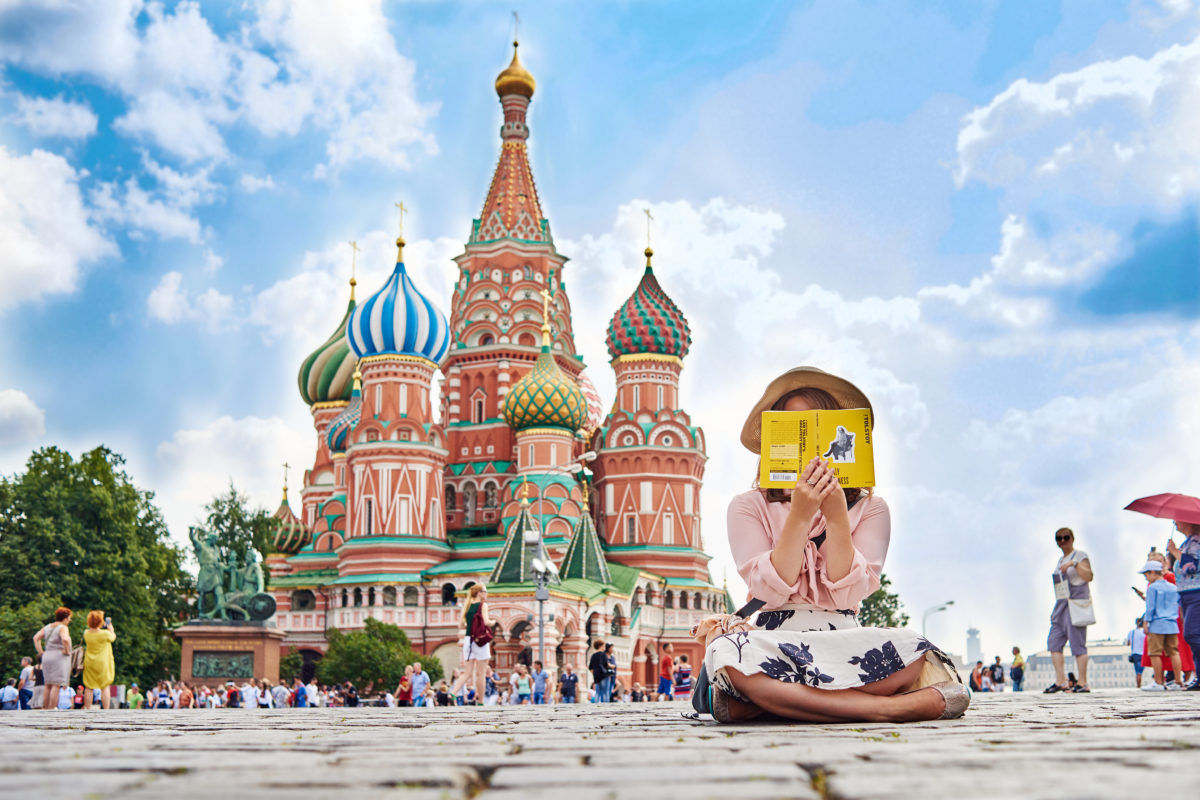
After a week in Saint Petersburg, I headed to Moscow for a dose of onion domes and borscht.
What You Need to Know Historically
In its history (and somewhat now) Moscow illustrates the East-meets-West vibe of Russia. Russia has always been torn between the cultural influences of the West, which it aspired to, and the East, which had a heavy hand in Russian culture in the early days of its existence. Many historians attribute Russia’s impulse for autocratic rulers and sometimes militaristic attitude to an invasion of the Mongols in the twelfth century.
Moscow was the center of Russian urban life from the early beginnings of its countryhood (once they upgraded from tribes) until Peter the Great founded Saint Petersburg. Up until that point the Kremlin was the center of government where Tzars were baptized, crowned, and then buried and where they ruled from.
 Even after Saint Petersburg was established it was fashionable for the elites of society to travel between the two. This was not always the case, it really depended on the Tzar. For example, Catherine the Great hated Moscow, which seemed old and stuffy to her, so she rarely visited. But under different rulers social seasons were often hosted in one or the other city. In Tolstoy’s work you find quite a bit of traveling between the two.
Even after Saint Petersburg was established it was fashionable for the elites of society to travel between the two. This was not always the case, it really depended on the Tzar. For example, Catherine the Great hated Moscow, which seemed old and stuffy to her, so she rarely visited. But under different rulers social seasons were often hosted in one or the other city. In Tolstoy’s work you find quite a bit of traveling between the two.
Fun fact: Kremlin actually just means city center, so you can have a Kremlin in any town. But generally “The Kremlin” means the one in Moscow. Contemporary government work is, of course, practiced there again.
 What You Need to Know Now
What You Need to Know Now
In the present day Moscow is an extremely wealthy, contemporary metropolis. Seriously, there’s money oozing from every corner of central Moscow. In Red Square there’s a giant, famous mall called GUM across from Lenin’s grave, that says it all. While Saint Petersburg is the more hipster and artsy of the two cities, Moscow is more polished and modern. As a huge destination for international business, you see little of the shortage and struggle of the late Soviet era in the economics of Moscow.
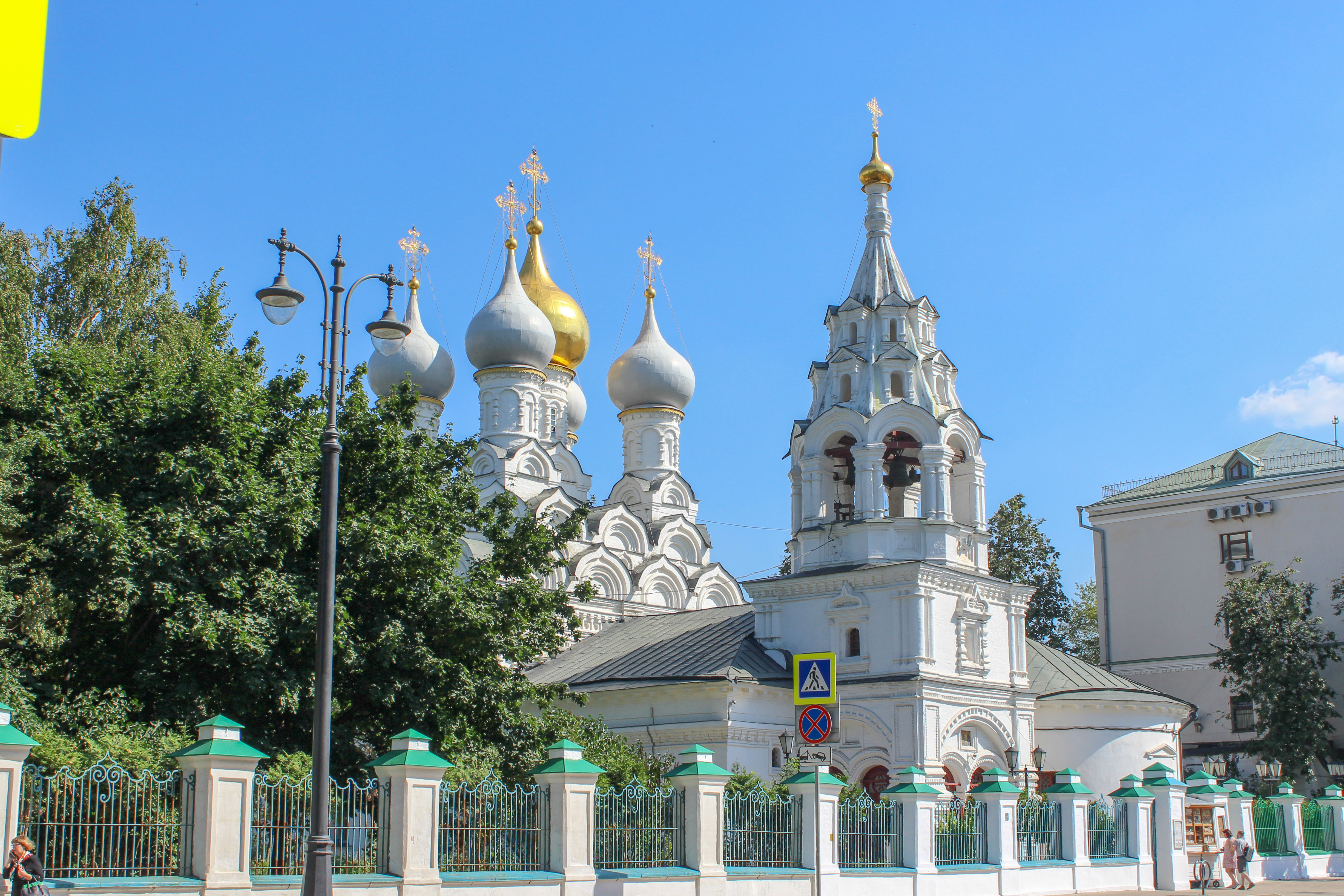 Keep in mind, Moscow and Saint Petersburg reflect the biggest, wealthiest urban centers in the enormous country. The economics and cultures of towns and villages outside of the cities, and out in Siberia, are very different.
Keep in mind, Moscow and Saint Petersburg reflect the biggest, wealthiest urban centers in the enormous country. The economics and cultures of towns and villages outside of the cities, and out in Siberia, are very different.
But remnants of the Soviet era do remain. Many people say that Russians aren’t friendly and don’t smile. In my experience they are very friendly when you ask for help or reach out. One of my tour guides Oleg said that Russians were trained not to smile under soviet rule, a smile might indicate you’re enjoying yourself too much and you could stand a turn in the gulag. I found that if you were friendly everyone else was friendly in return.
What to Do
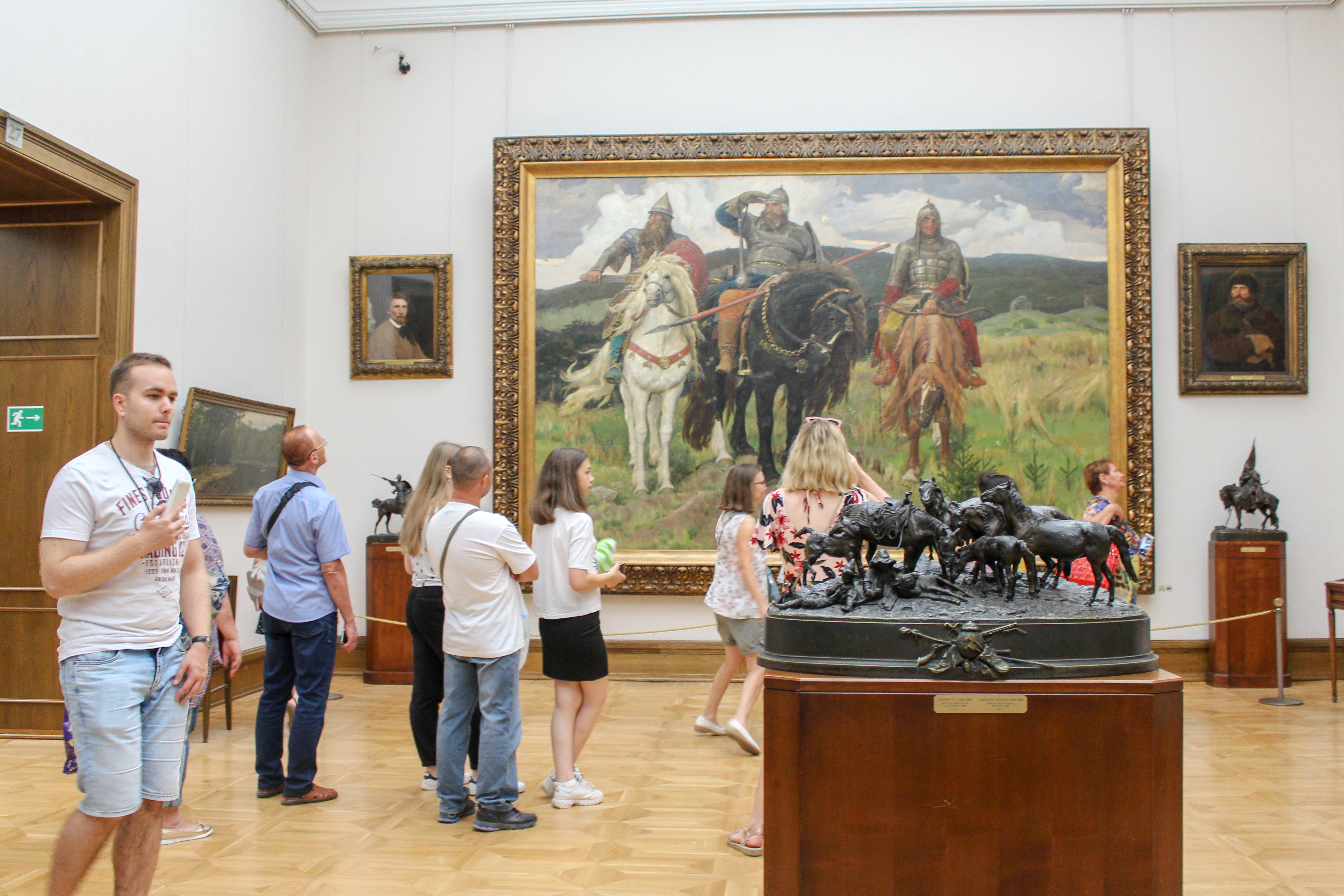 Though many of the famous art institutions are in Saint Petersburg, Moscow has a lot to offer art wise. The Tretyakov Gallery displays beautiful collections of Russian and European artworks. The Pushkin Museum has a great modern collection, including several Chagalls (one of my personal faves). The New Tretyakov Gallery has an awesome program of modern and contemporary art, which is really where my interests are. We also saw more Soviet art here than anywhere else which was very interesting.
Though many of the famous art institutions are in Saint Petersburg, Moscow has a lot to offer art wise. The Tretyakov Gallery displays beautiful collections of Russian and European artworks. The Pushkin Museum has a great modern collection, including several Chagalls (one of my personal faves). The New Tretyakov Gallery has an awesome program of modern and contemporary art, which is really where my interests are. We also saw more Soviet art here than anywhere else which was very interesting.
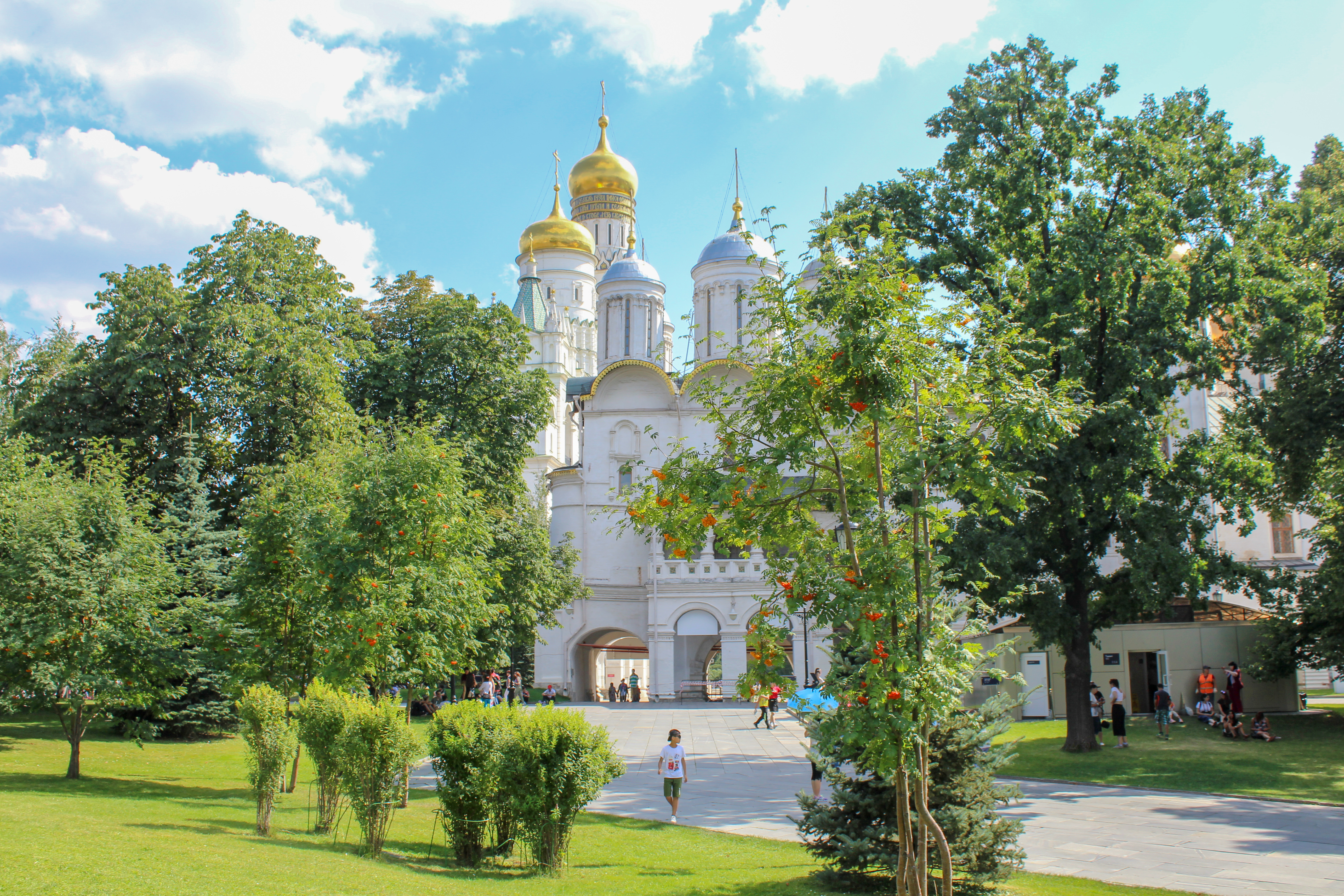 No visit to Moscow is complete without a trip to the Kremlin. To be honest, it wasn’t as scary or intimidating as I thought it would be given the hype pop culture in the U.S. gives the Kremlin. We went through light security, a metal detector and bag scanner and that was it. Inside is a beautiful compound. Our guide told us the Soviet leaders lived in the Kremlin which I didn’t know. This further confirmed my long held suspicion that the Soviet government was just Tzarism under a different name. Many Russians I spoke with agreed that even now it’s an autocratic system.
No visit to Moscow is complete without a trip to the Kremlin. To be honest, it wasn’t as scary or intimidating as I thought it would be given the hype pop culture in the U.S. gives the Kremlin. We went through light security, a metal detector and bag scanner and that was it. Inside is a beautiful compound. Our guide told us the Soviet leaders lived in the Kremlin which I didn’t know. This further confirmed my long held suspicion that the Soviet government was just Tzarism under a different name. Many Russians I spoke with agreed that even now it’s an autocratic system.
The Kremlin has a lot more to offer than just government buildings. The image above depicts Cathedral Square where you can find the churches where Tzars were baptized, crowned, and buried before Saint Petersburg was built. You can also tour the Diamond Fund where they display all the historic crowns and jewels of the Tzars. I also recommend a stop at The Armory which has little to do with guns and actually displays the Tzar’s thrones, carriages, garments, and other really cool relics. Having spent a decade devouring Tzarist history, it was mind blowing to be in the presence of those objects.
My travel companions and I had a good laugh while looking at the imperial gowns. The wedding gowns have almost grossly tiny waists (Catherine the Great’s was 14 inches) and as they get older the waists get bigger and bigger from the imperial diet.
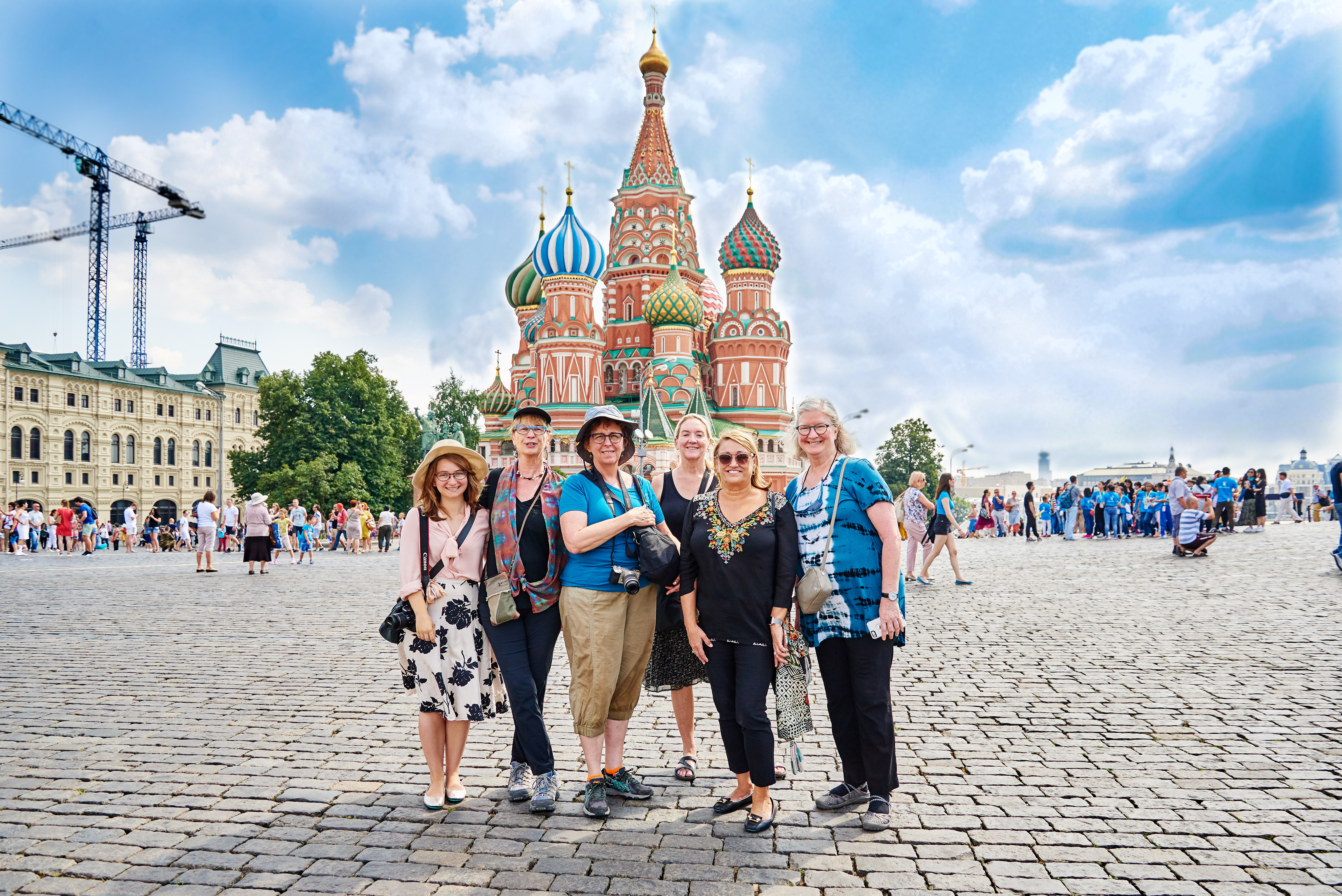 Red Square, next to the Kremlin, is the location of the iconic Saint Basil’s Cathedral, pictured above. The square is actually not named because of the amount of the color red in it or because red represented communism or because of all the blood that’s been shed there. It’s named that because the words “red” and “beautiful” are related in Russian and that term was applied to Saint Basil’s and then the surround area. It’s worth popping in to Saint Basil’s, completed in 1561 the church is architecturally very different from the Western Cathedral, inside and out. We were lucky enough to witness a men’s choir singing in one of the ancient alcoves.
Red Square, next to the Kremlin, is the location of the iconic Saint Basil’s Cathedral, pictured above. The square is actually not named because of the amount of the color red in it or because red represented communism or because of all the blood that’s been shed there. It’s named that because the words “red” and “beautiful” are related in Russian and that term was applied to Saint Basil’s and then the surround area. It’s worth popping in to Saint Basil’s, completed in 1561 the church is architecturally very different from the Western Cathedral, inside and out. We were lucky enough to witness a men’s choir singing in one of the ancient alcoves.
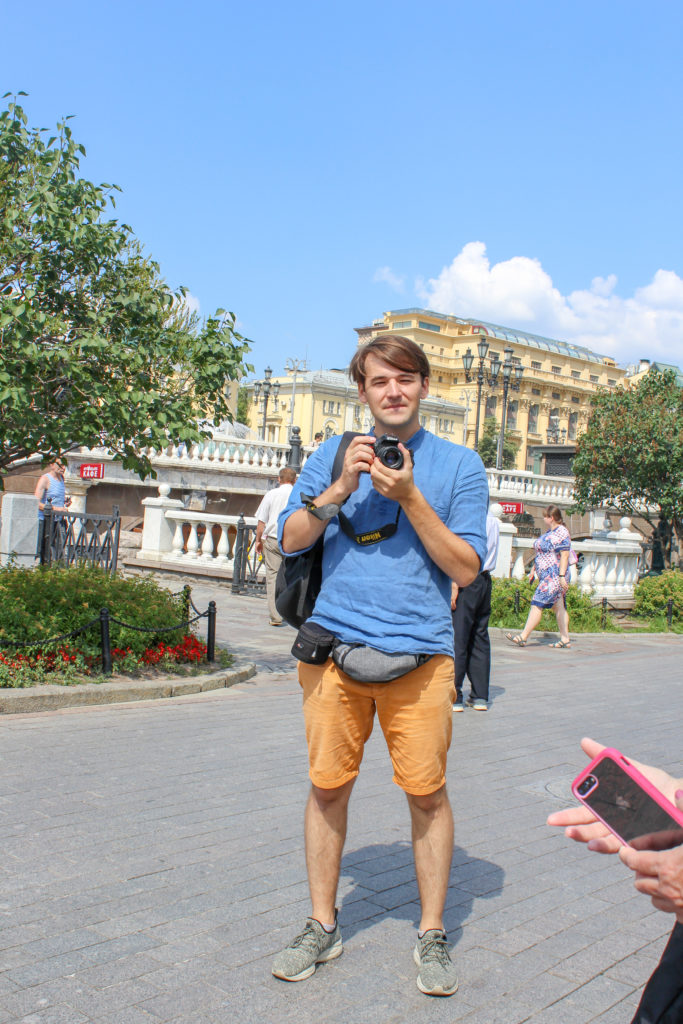
I have to give a quick shout out to Sergey, pictured here. Sergey was hired by the tour group we coordinated with in Moscow to take marketing-style photos of tourism. I immediately roped him into being my personal photographer.
I plan photos before I even travel to a place by searching images on Instagram. So I had a very specific image that I wanted of myself in front of Saint Basil’s reading Tolstoy. As you can see from the first photo of this post, I achieved that. And it’s all thanks to Sergey. I showed him a few ideas I had and he, bless him, laid down on the ground in Red Square to get me the shot I wanted.
Thanks to Sergey I have incredible, professional photographs to remember Russia by. I also learned that I have resting concerned face, I look so worried in the candid shots he took of us touring. What can I say, Russian history is pretty troubling!
He also took the picture above of me and my travel companions in front of Saint Basil’s cathedral.
To see more of day-to-day Moscow I recommend heading to the uber-trendy Patriarch’s Pond neighborhood. We actually ended up there by accident when I dragged my poor, wonderful travel companions out there looking for a ring shop. The bonus was we got to see a neighborhood where young professionals live and play. And I bought a beautiful ring as a memento.
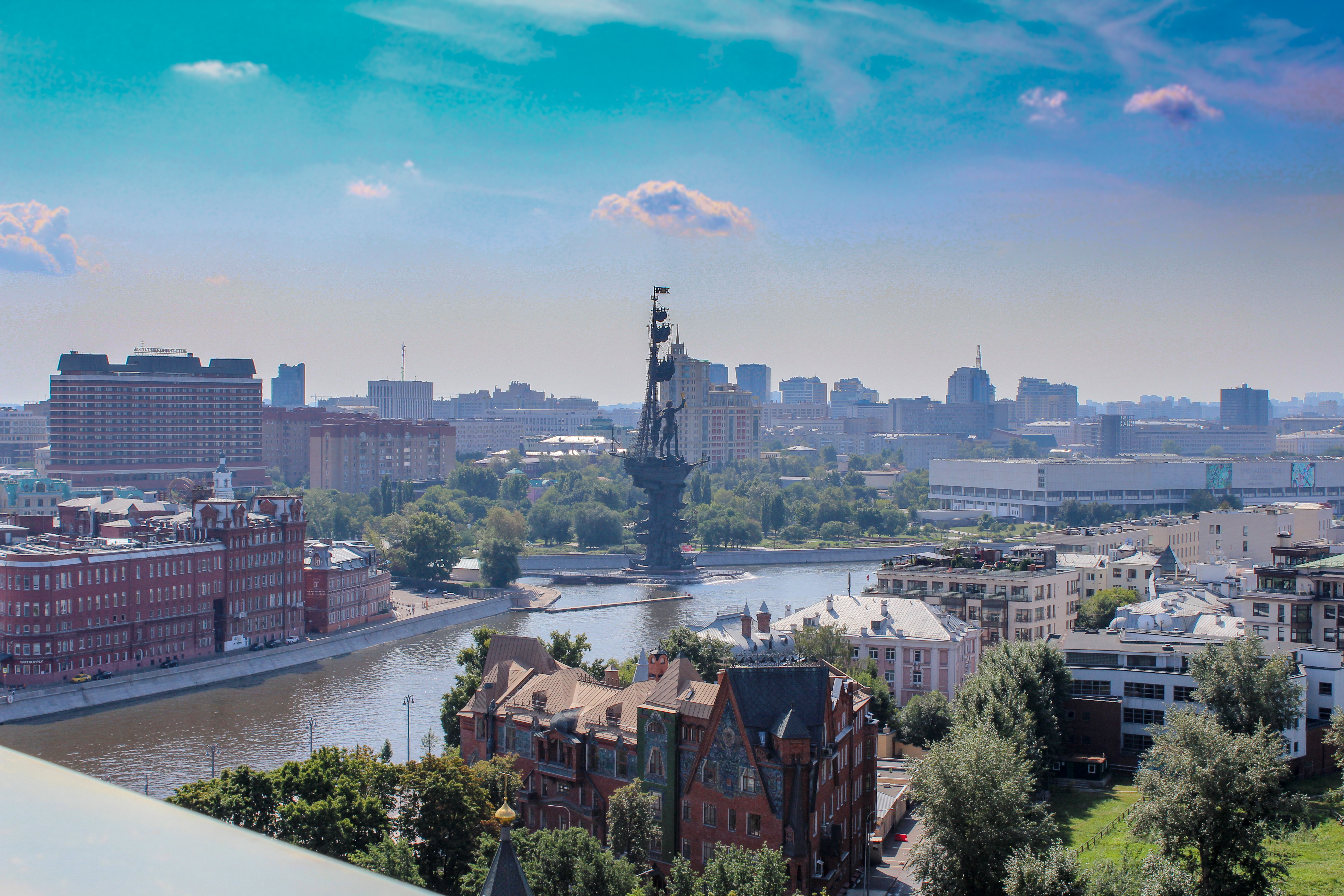 Just as I associate Saint Petersburg more with Dostoevsky, I associate Moscow more with Tolstoy. Though both writers wrote about both cities, they seem more tied to the locations where they lived. Tolstoy had an apartment in Moscow, as did Chekhov, and you can tour both. I went out on a special tour of their country estates, most important to me was Yasnaya Polyana, the village and estate Tolstoy lived in. I’ll be writing a separate post about that incredible experience (spoiler: lots of tears).
Just as I associate Saint Petersburg more with Dostoevsky, I associate Moscow more with Tolstoy. Though both writers wrote about both cities, they seem more tied to the locations where they lived. Tolstoy had an apartment in Moscow, as did Chekhov, and you can tour both. I went out on a special tour of their country estates, most important to me was Yasnaya Polyana, the village and estate Tolstoy lived in. I’ll be writing a separate post about that incredible experience (spoiler: lots of tears).
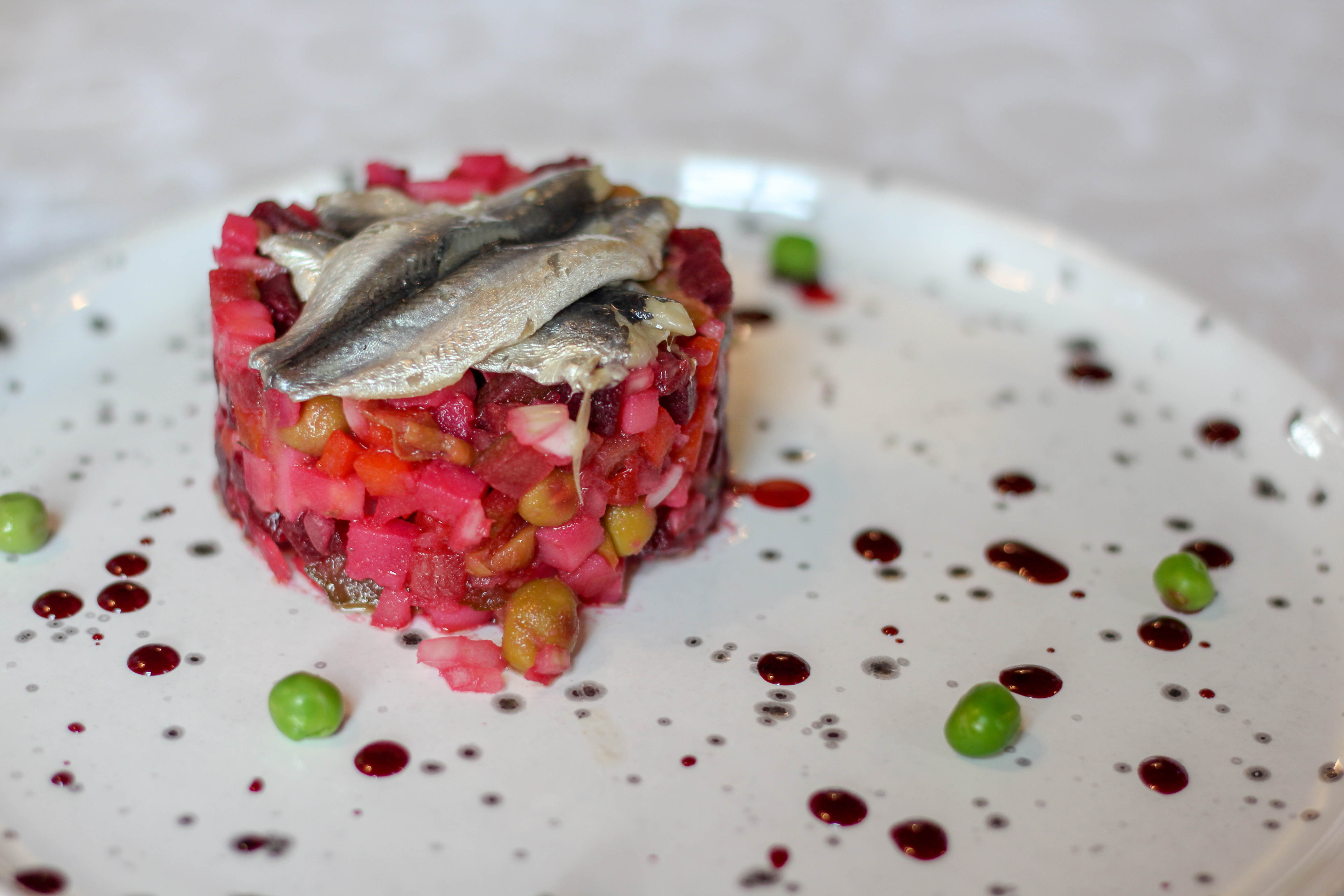 Pictured above is a beet salad topped with tinned fish, part of the traditional four-course lunch setup that I wrote about in my Saint Petersburg guide. I recommend checking out Dante, near the Bolshoi, for cocktails and delicious, contemporary faire. We also had a spectacular dinner at Twin’s Garden which offers both farm-to-table cuisine from a farm the owners run in the countryside, and a gorgeous rooftop space.
Pictured above is a beet salad topped with tinned fish, part of the traditional four-course lunch setup that I wrote about in my Saint Petersburg guide. I recommend checking out Dante, near the Bolshoi, for cocktails and delicious, contemporary faire. We also had a spectacular dinner at Twin’s Garden which offers both farm-to-table cuisine from a farm the owners run in the countryside, and a gorgeous rooftop space.
 I’m already planning my next trip back to Moscow. It’s a place where I can both live in the dramatic, intellectual past that’s entranced me for so long, and explore the vibrant contemporary culture that has evolved since.
I’m already planning my next trip back to Moscow. It’s a place where I can both live in the dramatic, intellectual past that’s entranced me for so long, and explore the vibrant contemporary culture that has evolved since.
Great this is helpful. I plan to visit Russia next year.